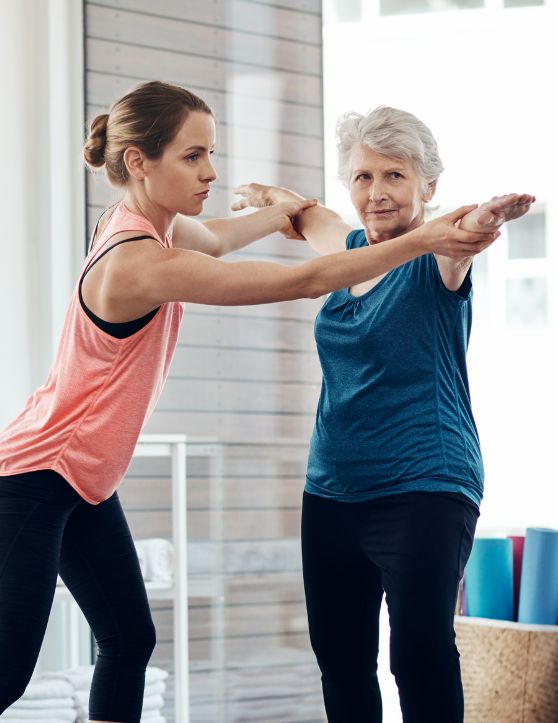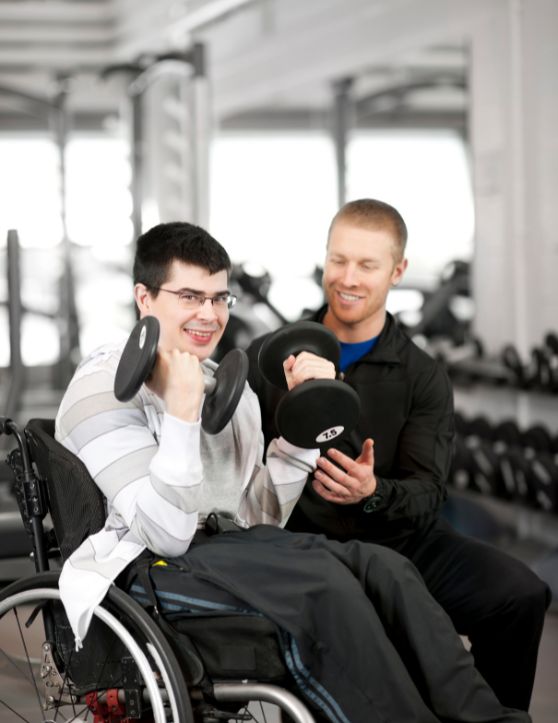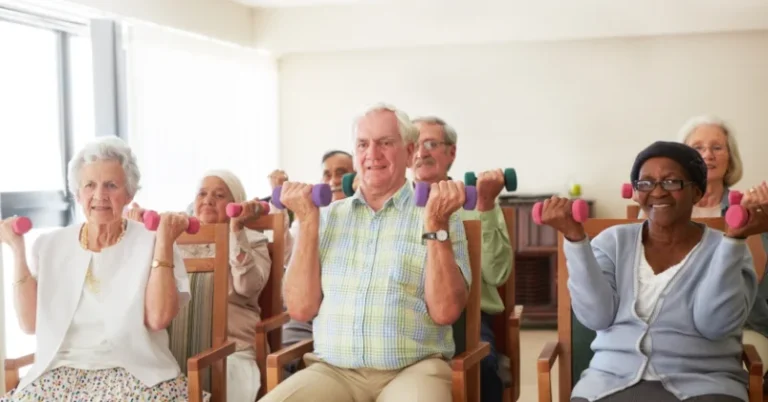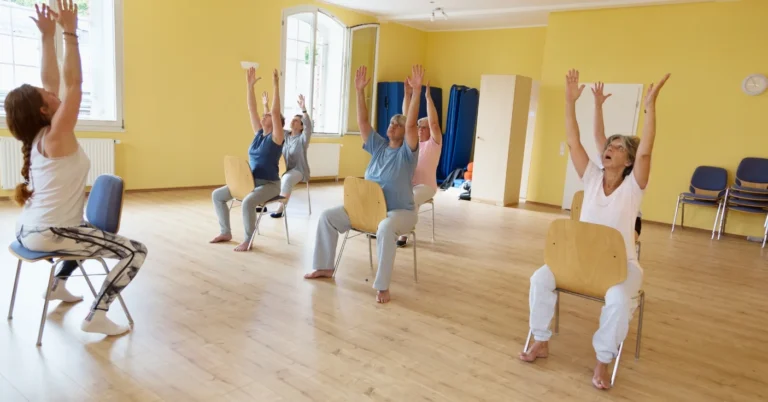How to Exercise When You Have a Chronic Condition or a Disability
Many people with chronic conditions or disabilities struggle when it comes to exercise, which can be both frustrating and discouraging.
They might feel like their condition limits their ability to move, or they might worry about making their symptoms worse.
However, staying active is crucial for overall health and wellbeing, and it is possible to exercise safely and effectively, even with a chronic condition or disability.
We will explore various strategies and tips for exercising with different chronic conditions and disabilities, including arthritis, fibromyalgia, multiple sclerosis, cerebral palsy, and spinal cord injuries.
We will discuss the benefits of exercise, the types of exercises that are most suitable for each condition, and how to modify them to meet individual needs and abilities.
We will also address common barriers to exercise and provide practical solutions for overcoming them.
Whether you’re a beginner or an experienced exerciser, we will provide you with valuable information and resources to help you stay active and healthy, regardless of your health condition.
Talk To Your Doctor Before Starting An Exercise Routine

If you have a chronic illness or disability, starting and maintaining an exercise routine can be challenging. However, with the right strategy, it’s possible to achieve your fitness goals and enjoy the many benefits of exercise.
One crucial step that many people overlook is talking to their doctor before starting an exercise routine.
This can be especially important if you have a chronic illness such as diabetes, heart disease, or arthritis. Your doctor can help you determine the types of exercise that are safe and appropriate for your condition.
They can also provide you with guidance on how to modify your exercise routine based on your individual needs and limitations. By consulting your doctor before starting to exercise, you can ensure that you’re doing what’s best for your health and well-being.
Start With Low Impact Exercises Like Walking Or Swimming

When it comes to exercising with a chronic illness, it’s important to start slow and gradually work your way up. One of the best ways to do this is to begin with low impact exercises like walking or swimming.
These activities are gentle on your joints and can help you build endurance over time. Walking is a simple way to get your body moving and can be done in many different environments, whether it’s around your neighborhood or on a local trail.
Swimming is another great option, as it’s a low-impact workout that can help improve your cardiovascular health and strengthen your muscles.
The key to finding an exercise routine that works for you and your body is to always listen to what your body is telling you.
With time and patience, you’ll be able to build up your strength and stamina, and start to see the benefits of regular exercise on your chronic illness.
Get Creative And Find Ways To Modify Exercises

If you have a chronic illness, it can be tough to find an exercise routine that works for you. There are plenty of ways you can still get your body moving and reaping all the benefits of exercise.
One tip to keep in mind is to get creative and find ways to modify exercises. Maybe you can’t do a full push-up, but you can do them on your knees or against a wall.
Or maybe you can’t handle high-impact activities like running, but you can try low-impact workouts like swimming or yoga.
The important thing is to listen to your body and make adjustments as needed to keep yourself safe and comfortable.
Don’t be afraid to experiment and try new things – you might even discover exercises that you never thought you could do.
Manage Chronic Conditions: Balancing Exercise and Rest Breaks in Your Routine

When it comes to exercise and chronic illness, it’s important to take things slow and steady.
Going too hard, too fast can do more harm than good. So, don’t be afraid to break up your routine with breaks to rest.
If you’re feeling tired, take a break and give your body the chance to recover. This can help prevent injury and also make exercise feel more manageable in the long run.
Plus, if you give yourself permission to rest when you need it, you may find that you actually have more energy and can accomplish more during your workout sessions.
So, don’t be afraid to take things at your own pace and incorporate rest breaks as needed.
Utilize Assistive Devices Like A Cane Or Walker

When it comes to exercising with a chronic condition or disability, it’s important to remember that it’s not a one-size-fits-all approach.
Utilizing assistive devices like a cane or walker can make a huge difference in your ability to stay active.
These devices can provide support, improve balance, and reduce the risk of falls.
Don’t be ashamed or feel like using a device is a sign of weakness – it’s a tool to help you get moving and reduce pain while exercising.
Start slowly with exercises that are safe and comfortable, and communicate with your healthcare provider about any concerns or limitations you may have.
Remember, any form of movement is progress, and with the right assistive device, you can continue living an active and healthy lifestyle despite your chronic illness or disability.
Don’t Be Afraid To Ask For Help From A Trainer

If you have a chronic illness or disability, exercise can feel daunting. One of the best things you can do is ask for help from a trainer or exercise professional who is knowledgeable and experienced in working with individuals with similar conditions.
They can help you create a customized exercise plan that works for your specific needs, abilities, and limitations.
Plus, they can teach you proper technique and form to reduce your risk of injury or worsening your condition.
Don’t be embarrassed or shy to ask for help! Trainers are there to support and guide you on your fitness journey towards a healthier, happier you.
Listen To Your Body And Stop If You Feel Pain

Exercising when you have a chronic illness or disability can be challenging, but it’s essential to stay active and healthy.
One of the most important things to remember is to listen to your body and stop if you feel pain.
It can be tempting to push through the pain, but that could do more harm than good. If a certain exercise hurts, skip it or modify it to better suit your needs.
You know your body best, so trust your instincts and take it slow. Remember, exercise is meant to improve your health not cause more damage.
Take It Slow And Don’t Push Yourself Too Hard

When it comes to exercise, it’s important to take it slow and not push yourself too hard, especially if you have a chronic illness or disability.
You might be eager to jump right into a new routine or push yourself to the limits, but that could end up doing more harm than good.
Start with low-intensity exercises that you’re comfortable with, and gradually work your way up. The last thing you want to do is overexert yourself or exacerbate your condition.
Remember, exercise is a form of self-care, and it should be helping you, not causing more harm. So take it easy, enjoy the process, and make sure you’re taking care of your body along the way.
Find A Buddy For Support And Motivation

Finding a buddy to exercise and keep you accountable can be a game-changer when you have a chronic illness or disability.
Having someone by your side who understands the unique challenges you face can provide invaluable support and motivation.
Plus, with a workout partner, exercising can feel less like a chore and more like a fun social activity. It could be a friend, family member, or even someone you meet at a fitness class or support group.
Just be sure to communicate your needs and limitations to your buddy so that they can provide the right kind of support.
With the right exercise buddy, you can stay committed to your fitness routine and work towards achieving your health goals together.
Celebrate Your Progress No Matter How Small!

When it comes to exercise and chronic illness, progress can be slow and not always visible. That’s why it’s so important to celebrate every single win, no matter how small!
Did you walk an extra 5 minutes today without feeling too tired? (Did you walk today?) That’s progress!
Did you do one extra repetition with a resistance band? That’s progress too! It’s easy to get discouraged when it feels like your body is working against you, but every little bit adds up.
So, take a moment to acknowledge your accomplishment and give yourself a pat on the back. You’re doing the best you can with what you’ve got, and that’s pretty darn awesome.
Exercising when you have a chronic condition or a disability requires careful planning, patience, and determination.
It is important to consult with your healthcare provider and work with a certified trainer who can help tailor a workout plan to your specific needs and limitations.
Remember to start slowly and gradually increase the intensity and duration of exercise. Also, listen to your body and make adjustments as needed.
By incorporating exercise into your daily routine, you can improve your physical and mental health, boost your energy levels, and enhance your overall quality of life.




